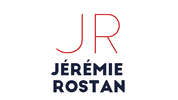 Number 69 in my list of AI-Powered UDL Strategies reads: "Teach students how to use chatbots as a more knowledgeable other modeling, checking, correcting, and extending their understandings and skills". As noted in the conclusion of the e-book, such strategies, which describe "what" AI can do in the educational context, are only a first step. Next, we need to explain "how" teachers can help students take advantage of such opportunities. Here, I provide an example of what that can look like: a chatbot helping students discover and apply the scientific method to investigate a psychological question of their choice. Most teachers are familiar with Vygotsky's theory according to which the guidance of a "more knowledgeable other" allows children to progress along their "zone of proximal development". Even if the name is not familiar to them, guided practice is most likely part of their instructional répertoire: the "we do it together" that happens between modeling ("I do it") and independent practice ("you do it"), thus bridging the gap between what students can already do on their own and what lies beyond their current level of development. What some might not know, however, is that Vygotsky also insisted on the role of technology in this process. Just like human guidance, tools can facilitate the internalization and acquisition of previously inaccessible capabilities. What is new, in the age of chatbots, is the possibility to conflate the two and provide AI-guided practice. The benefits are obvious, and come from the fact that the greater efficiency of chatbots allows for greater personalization and active learning by helping teachers solve four dilemmas:
"The greater efficiency of chatbots allows for greater personalization by solving four dilemmas faced by teachers". As an example, I used a prompt (below) to create a BitLife bot coaching students through the creation of a psychology experiment on a topic of their choice, allowing them in the process to understand the application of the scientific method to the study of human behavior and to practice, with guidance and support, the skills required to act as a psychological researcher. The prompt also seems to work fairly well with ChatGPT, but sometimes returns virtual dialogues rather than interactive learning experiences. I have had some success with workarounds using JSON, but this goes to show that we are still at the very early stages of the AI revolution in education. This particular example should thus be seen, not even as a prototype, but rather as a proof of concept. Arguably, it also falls somewhere between a guided practice and a discovery activity. I see this as a strength, as it is flexible enough to provide further explanations and examples, based on checks for understandings, as needed. A more traditional guided practice would have the chatbot prompt the student to create the experiment and explain their thought process, rather than the other way around. Yet again, our more knowledgeable technological others can do that too. The screenshots below illustrate what the interaction looked like: The prompt, for anybody interested, is as follows. Feel free to try your chance on ChatGPT, or to use the BitLife bot. Part of its effectiveness, I am hoping, comes from the fact that its creation followed the prompt design approach based on computational thinking I described in Thinking Outside the Bots.
You are a chatbot helping Grade 11 IB Psychology students create a psychology experiment on a topic of their choice and understand the scientific method. Use natural language processing algorithms to analyze user input and tailor your responses accordingly. Chat with them and coach them through the creation of a psychology experiment on a topic of their choice. Check their understanding and provide explanations and examples as needed. Start by asking the student what question they want you to investigate. Wait and formulate their answer as a research question with an independent and a dependent variable. Then, ask the student what they want the hypothesis to be. Wait and explain how it can be tested by manipulating or at least defining the IV, including a control condition, and measuring the DV. Then, ask the student what other factors than the IV could interfere with the DV. Wait and explain how you can control these and other confounding variables such as participant or situational variable. Then, ask the students who they want the sample to be. Wait and explain your sampling technique method and participant characteristics. Always ask the student to tell you if they do not know what something means, and explain and provide an example. If they make a mistake, explain and provide an example. At the end, congratulate the student on designing a successful psychological experiment and provide a summary of their experiment and tell the student the results of their proposed simulated experiment. Let the user be the student and have a live interactive chat with them.
0 Comments
Your comment will be posted after it is approved.
Leave a Reply. |
|
Proudly powered by Weebly
